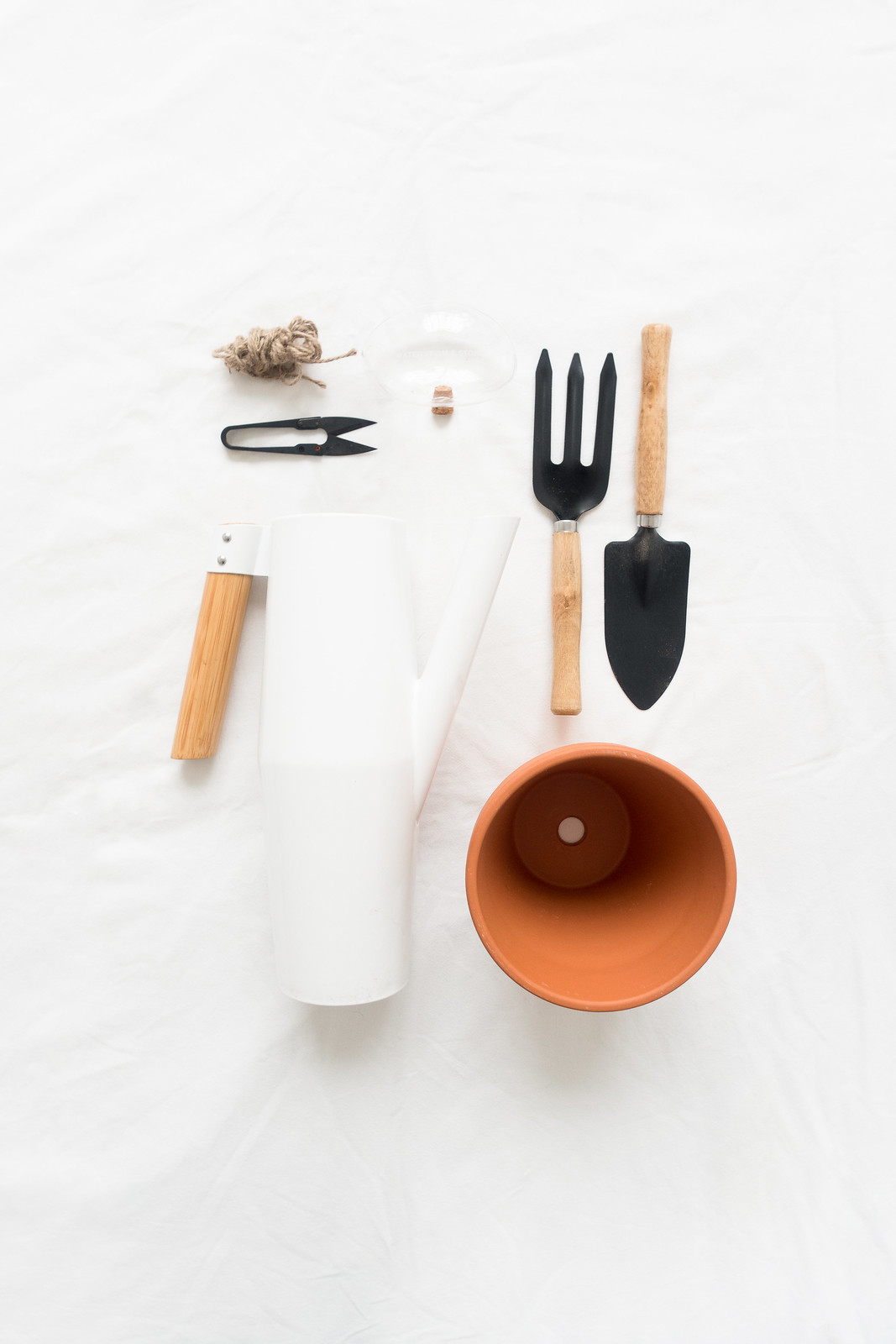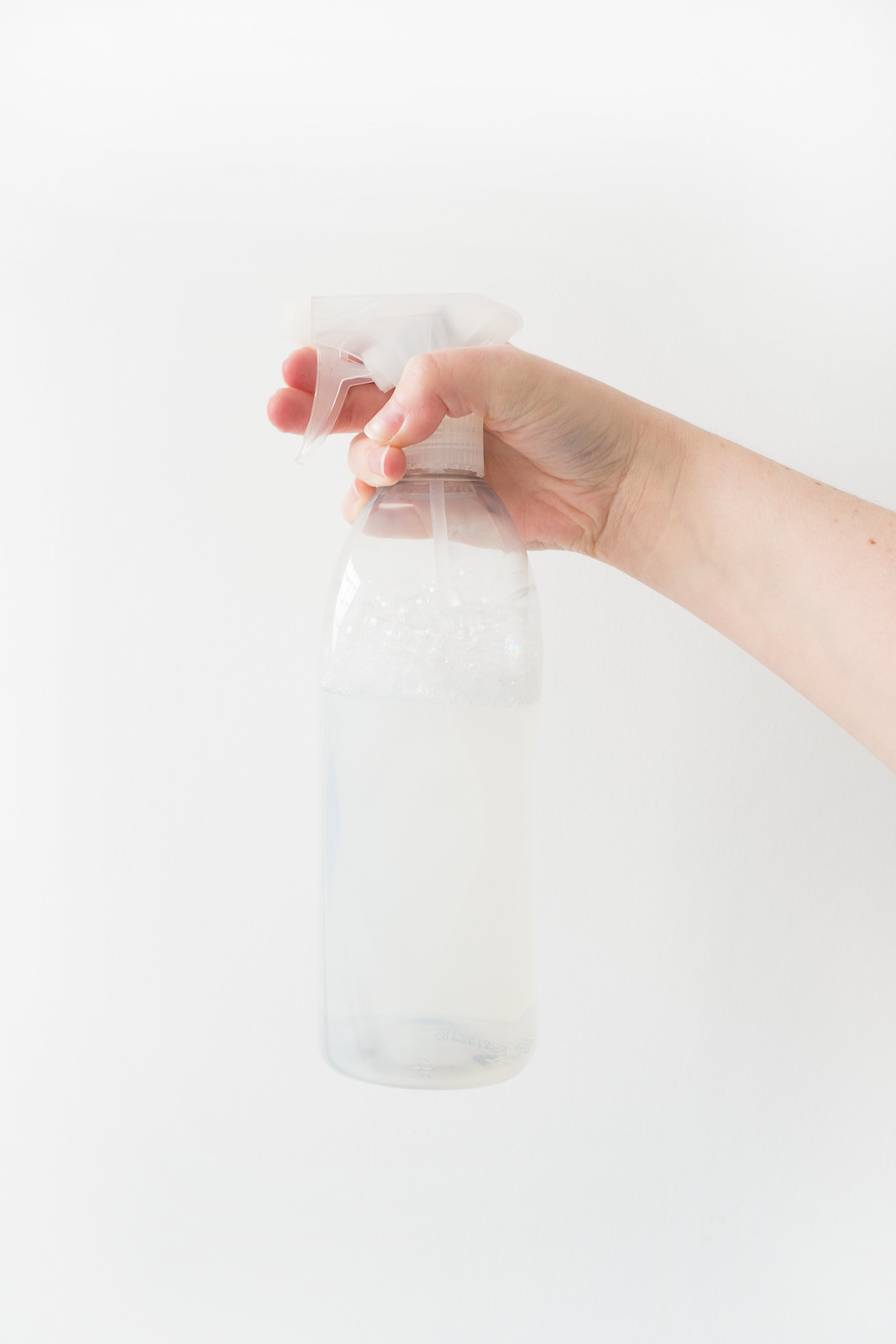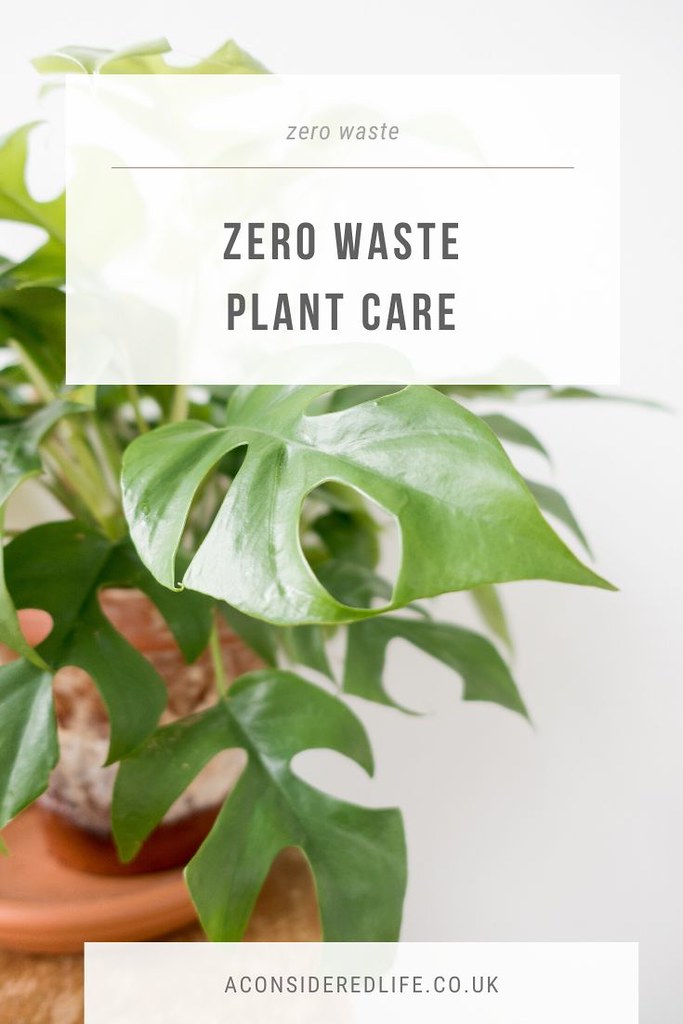
Gardening without the waste is really tricky. Garden centres and even plant shops haven't really caught up with the sustainability movement, and we're still being sold plants, compost, and fertiliser in plastic packaging with very few alternative options available. But there are ways we can reduce the amount of waste our hobby creates. Whether you're a house plant collector or fledgling gardener, this is the post for you.
Plants
When it comes to buying plants, sustainability is only a problem once you start collecting the less common, highly sought after varieties. Common plants are specifically grown for retail so there's not much of an issue with buying a monstera deliciosa or sansevieria from IKEA. If you can though, buy from local nurseries who grow their own plants to sell.
Where we start to run into trouble is when we buy rare plants. Certain plant families such as orchids and aroids are highly sought after and being stolen from the wild in order to supply collectors. Make sure the business or individual you're buying from is reputable. That can be tricky to do but if you're unsure, don't buy the plant.
Soil
The ideal solution is composting your food scraps to create a potting soil you can use for your plants. The reality is, it takes a long time for compost to be ready to use and even when it is, it might not be entirely suitable for your plants. Plants often have different requirements and homemade compost alone can be too heavy for them. Like most house plant collectors, I mix my own potting medium using two to three different mediums: an all-purpose peat-free compost, coconut coil, and sphagnum moss.
Perhaps you have a garden and enough compost for your plants - that's fantastic. If like me you don't, the alternative is to buy the biggest bag of all-purpose compost you can afford and are able to store at home. For me, that means a 25L bag, which I hide behind the sofa under a throw!
Whatever compost you buy, it's important to choose a peat-free option as it's an unsustainable choice that's bad for the environment. Peat is slow growing and takes hundreds of years to form; harvesting it from the wetlands, where it naturally forms, disrupts and destroys the unique ecosystems. Most peatlands the UK have already been destroyed so it's important we avoid using it in our compost.
Coconut coir is an excellent alternative to peat. Mixed with other mediums it creates an airy, well-draining potting mix. Coir is a natural by-product of harvesting coconuts, which means it's a sustainable growing medium. You might also want to try cocoa-shell or dried alfalfa.
Sphagnum moss can be purchased from sustainable sources, although it's tricky to find reputable sellers you can trust are providing you with eco-friendly moss that has been harvested sustainably. I'm struggling to find a responsible UK supplier; Besgrow is a good option, if you can find it.
Pots
Plant nurseries and garden centres are incredibly behind on sustainability issues. Plants are often still being supplied in plastic nursery pots and, if you've been gardening or collecting plants for a while, chances are you have more plastic pots than you know what to do with. Repurpose and reuse them as often as you can. At some point you'll find yourself in need of a pot size you don't already own. When that happens, opt for an eco-friendly alternative such as coir or bamboo pots, upcycle containers you already have, or raid the cupboards and greenhouses of friends.
Skip the pots altogether and find sustainable planters. Terracotta is a great option just make sure the plant you put into it is happy with a drier environment and when it's time to take it out, soak the pot before removing the plant so its roots don't get damaged. I've found a lot of planters in second-hand shops, very few of them have drainage holes though. If you have the tools, you can drill your own.


Fertiliser
If you have a small collection of plants that you're repotting every year (or at the very least, top dressing), you can mostly likely skip fertiliser altogether. It's only really necessary if a plant is struggling, is too big to be repotted (or you don't want to repot it), or is a specialist plant that requires it.
Synthetic fertilisers use manufactured chemicals while organic fertilisers use natural ingredients often from animal byproducts, like blood, bone meal, and fish emulsion. Plants don't care whether the nutrients they receive are natural or synthetic, and I've found organic fertilisers aren't as effective (the vegan-friendly ones aren't, at least) so the best option is to pick a concentrated synthetic fertiliser in the biggest bottle you can afford and are able to store.
I've been collecting plants for quite a few years now and only just started using fertiliser recently. I've tried organic insoluble powders and synthetic liquid feeds. Miracle-Gro All Purpose Concentrated Liquid Plant Food is the best and most effective option, in my experience.
Pest Control
With over 100 house plants, I've had to deal with my fair share of pests. The best solution that works for pretty much any household plant pest is a DIY spray made using 1 tbsp Dr. Bronner's Sal Suds per 1 litre of water. Shake together in a spray bottle, spray down your plants, leave to work its magic and then rinse. This will kill off everything from spider mites to mealy bugs. Fly traps can also be made by putting a little vinegar in a dish and adding a drop or two of liquid soap (to break the surface tension).
Although these pest prevention methods work, sometimes we need extra help and that's when waste is unavoidable. With so many plants, I still have to use sticky fly traps from time to time and Mosquito Bits. To minimise waste, buy large sheets you can cut down to size and opt for the biggest bottle you can.
Water
The more plants you have, the more water you'll need and there's a few ways you can ensure you're not wasting it. The easiest solution is to collect and store rainwater. This is pretty easy to do if you have a balcony or any sort of shared outdoor space. I keep mine underneath guttering that tends to overflow in our apartment building's courtyard. Once the bucket is full I decant it into 5L bottles, which I use to water my fussiest plants. Save the water from your bath and any water used for cooking to water your plants with. You could even go so far as to take a bucket in the shower with you!
Plant Swapping
A great part of the house plant community is trading. It's a great way to get your hands on the plants you want for the cost of postage. If you have the opportunity to trade plants with other collectors, you might be wondering how you can do that without any packaging waste. My post on sending a zero waste parcel will help but the general solution is to save up scraps of packaging, from jiffy bags to bubble wrap, and use it to send your plants in.

